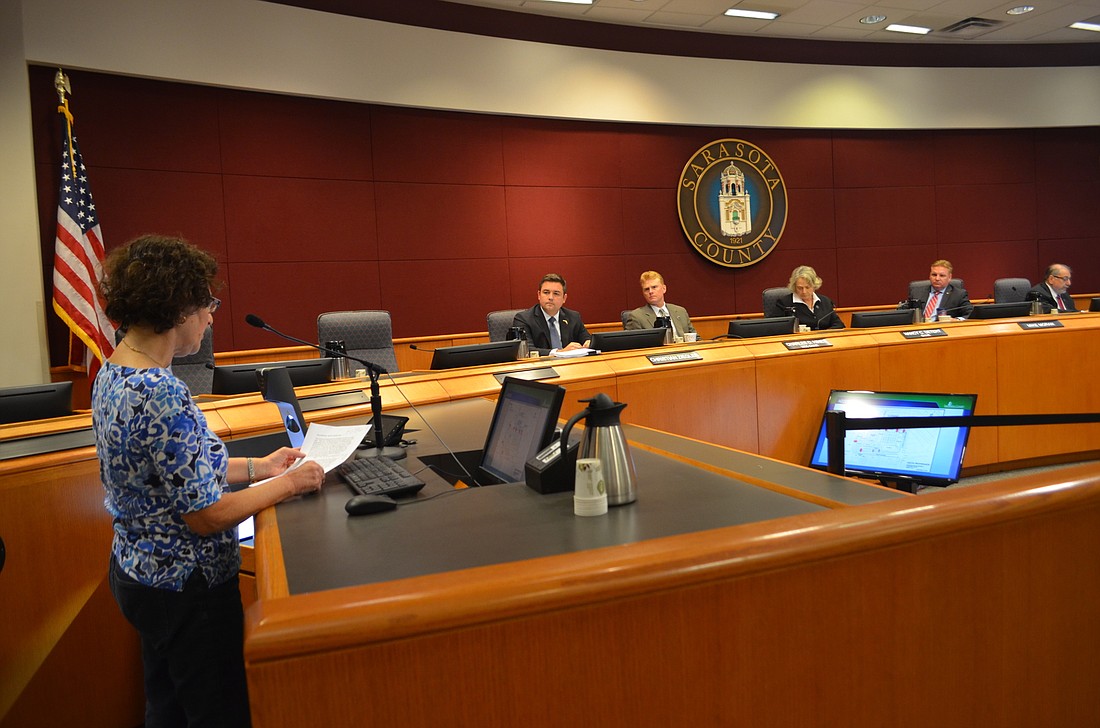- March 16, 2025
-
-
Loading

Loading

For hours Wednesday, as they had a month earlier, opponents of the proposed Siesta Promenade development pleaded with county officials to reject the plans.
Once again, their efforts proved futile.
In a series of 3-2, 4-1 and 5-0 votes, the County Commission approved key elements of Benderson Development’s application for a mixed-use project at the northwest intersection of Stickney Point Road and U.S. 41. The developer intends to build 414 residential units in addition to a 130-room hotel, 133,000 square feet of retail space and 7,000 square feet of office space.
The vote will allow for the construction of a project that has drawn objections from residents surrounding the 24-acre site. Although county staff once again affirmed its belief the proposal was compliant with planning regulations, neighbors expressed concerns about the project’s effects on traffic and the character of the area.
In addition to general concerns about the intensity of a large project at an already busy intersection, project opponents argued the proposal failed to comply with county standards. As part of the project, Benderson filed a Critical Area Plan, a land-use tool designed to ensure large pieces of land are developed in accordance with the county’s comprehensive plan.
The Critical Area Plan also provided an opportunity for Benderson to exceed the height and residential density limits in the underlying zoning district. Under the proposed Commercial General zoning designation, Benderson would be entitled to build 13 units per acre and buildings up to 45 feet tall. But the Critical Area Plan allows Benderson to build up to 25 units per acre with a maximum height of 85 feet.
The project includes a density of 20 units per acre, with maximum building heights of 40, 50, 65 and 80 feet on different segments of the property. Because Benderson sought building rights it was not entitled to, residents argued the county should seek design changes designed to scale down the project.
“There can be a reasonable use for this property without the applicant incurring undue hardship,” said Sura Kochman, president of the Pine Shores Neighborhood Alliance.
Benderson Director of Development Todd Mathes argued the proposal was optimal for the site, more in line with county planning guidelines than a project the company could pursue under traditional zoning regulations. He pointed to elements of the plan, including 25 affordable housing units and new traffic amenities, as evidence the county would benefit from the project.
Commissioners Charles Hines and Nancy Detert questioned the significance of the affordable housing commitment. Hines asked if county staff asked Benderson to provide more than the minimum number of affordable housing units outlined in county regulations, or if staff had asked Benderson to ensure those units were affordable for longer than five years. Planner Steve Kirk said staff did not seek anything above what Benderson initially proposed.
Detert, who voted against the Critical Area Plan, said the county didn’t derive enough benefits from the proposal.
“I just don’t see anything new about the project, and I see a lot of downside,” Detert said.
Hines also opposed the Critical Area Plan, changing his vote at the meeting after initially approving it. Although he supported a mixed-use concept at the site, he had reservations about the proposed heights, in addition to affordable housing. During the meeting, he expressed hope the county could extract additional concessions from Benderson, but the board did not pursue significant changes to those aspects of the Critical Area Plan.
The majority of the commission was ultimately supportive of the plan. Although the board expressed some concerns about traffic leaking into surrounding residential areas, prompting a commitment from the developer to adjust the proposed access points, officials indicated they were comfortable with the scope of the project.
“There’s a lot of benefits coming to us from this project,” Commissioner Christian Ziegler said.